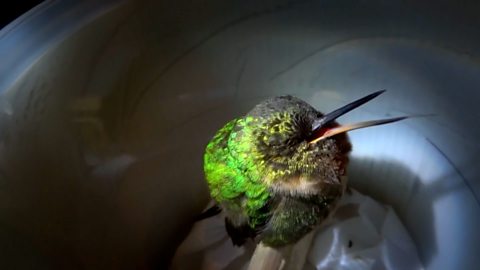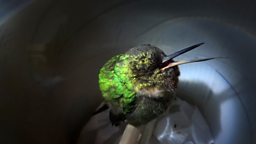Hummingbirds
There are over 300 species of hummingbird, all of which are found in the western hemisphere. Although hummingbirds are small birds, ranging from around 4.5 - 20cm (1.75 - 8 inches) in length, they are highly territorial and have been known to chase off other birds as big as hawks from their territory.
These deep breaths produce a small whistle – a tiny and unlikely culprit of snoring.
Hummingbirds’ main food is nectar. By beating their wings between 15 and 80 times in a second in a figure-of-eight, hummingbirds are able to hover at the opening of flowers and extend their tongue to drink the nectar. Beating your wings at this speed however uses a lot of energy and hummingbirds need to refuel every 15 minutes or so.
Cute factor – Snore
It’s hard to believe that these hyperactive hummingbirds ever stop but at night their flower fuelling stations close, so to survive, they enter a state called torpor. Torpor is a form of sleep where the heart and metabolic rate slows allowing the animal to conserve more energy. The downside is that it is much harder to wake an animal from torpor, but the hummingbird has a special technique that we find irresistibly cute. To wake the hummingbird must take on more oxygen, these deep breaths produce a small whistle – a tiny and unlikely culprit of snoring.

A sweet little snore
This high pitched squeak is actually the sound of a sleeping hummingbird.











